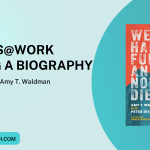Write through Worry
March 24, 2020
Note From Rochelle
Dear Writers,
I’ve been working at home for more than 20 years, and I’m struggling to focus. At first, I spent too much time scrolling through my social media feeds, searching for new information and checking on friends. I got distracted by all of the new opportunities to stay busy: concerts, classes, and talks. And of course, I worried. (And I’m an expert worrier!)
As the week progressed, I made a plan to get work done. Today’s tip shares my suggestions for writing through worry. If you find it helpful, share it with others using this URL: https://writenowcoach.com/write-through-worry/
And when you’re done reading the post, I have a favor to ask you. I’m taking time during this pandemic to evaluate my business and discover how to serve you best. If you have a few minutes, I’d love it if you’d fill out this survey to help me understand what you need: WRITE NOW! COACH SURVEY.
Blessings!
Rochelle

Writing Through Worry
By Rochelle Melander
The air is thick with fear. News outlets, political leaders, and hospitals share press releases filled with information on how to stay healthy. Because many of us are sheltering in place, we have more free time. Experts recommend that we use this extra time wisely. Maybe we could write a book, learn to play an instrument, or draw. We need to distract ourselves us in a healthy way, and opportunities abound.
Focusing on our creative work will help us weather this time. Creativity reduces stress. It can help us deal with difficult emotions. One study suggested that focusing on creative work can boost our immune system.

I know that it’s hard to focus on writing when we’re worried. That’s why I’ve created a plan to help you focus and create. Read through the whole article, then work the steps in the order that makes sense for you.
Compartmentalize and Cope with Worry
In times like this, it’s tempting to let worry run our days. We feed it by watching and reading news. We spread it by sharing our worry in texts, conversations, and social media posts. Worry can become an unhelpful companion who turns our days into fear fests. Yikes.
Instead of worrying all the time, compartmentalize your worry. How?
Compartmentalize Worry
So what does compartmentalizing worry look like? First, it means eliminating all of the ways we cultivate worry during the day.
Limit news consumption. For me, compartmentalizing works only if I also limit my exposure to news. Life coach Eddie Shieh recommends that people consume only the news they intend to use. (You can watch his video on his Facebook Business page.) For example, if you want to find out whether you can take your children to the park or where you can get take-out food, then do a specific search for that information. Stop watching television, reading all the news, and scrolling through social media feeds.
Choose your news. If you feel like you need to stay up on the news, limit your time online. Set aside one or two short periods each day (15-30 minutes) to read the news. Choose one or two trusted news sources, and read their daily updates.
Limit social media. Limit your exposure to social media and especially to friends and colleagues who sound like Chicken Little shouting, “The sky is falling!”
Set aside time to worry. Choose a limited amount of time each day to worry. Maybe fifteen minutes? I find it helpful to do this later in the day, after I have done the bulk of my work.
Cope with Worry
I’m noticing that facing my fears and feeling what comes up helps me. But it helps only if I take time to process my feelings. There are multiple healthy ways to do this.
Feel. First you need to feel what you feel. Most emotions pass through us quite quickly. I first heard about the 90-second rule in a class with Martha Beck. She said that most feelings take just 90 seconds to run through our bodies.
Jill Bolte Taylor talks about this in her book, My Stroke of Insight:
Once triggered, the chemical released by my brain surges through my body and I have a physiological experience. Within 90 seconds from the initial trigger, the chemical component of my anger has completely dissipated from my blood and my automatic response is over. If, however, I remain angry after those 90 seconds have passed, then it is because I have chosen to let that circuit continue to run.
Still, if you can take a deep breath and feel the fear, it will go away more quickly. Know this: you don’t have to white knuckle it. Feel the fear with some kindness toward yourself. Talk to your anxious inner child the way you’d talk to any child who was afraid.
- You are safe.
- You are okay.
- This feeling will pass.
- It will be fine.
Process emotions. Once you have felt the fear, it is helpful to process it. Journaling can be a helpful tool to cope with your emotions. I recommend writing three pages a day about what is going on. If you can, try:
+Recording five concrete statements about your day, using sensory detail. This will help you to get connected to the present moment. It might be as simple as recording the weather, the kinds of birds you saw from the window, and what you ate for each meal.
+Listing three to five people, events, or experiences you are grateful for. When we dwell in gratitude, we feel less afraid. The positive emotion of gratitude helps us to feel more hopeful.
+Writing three sentences about how you are finding meaning in this difficult time.
If you need more information, I wrote a whole long post about journaling at Medium, Writing to Heal
Bonus tool! I am also finding tapping to be very helpful. Advanced EFT trainer Liesel Teversham stopped by the blog last year to share how EFT can help people cope. Check out her post for detailed information on how to use tapping to deal with your feelings.
Plan the Day
I’ve worked at home for many years, and have discovered that I am more focused and productive when I have a schedule. Right now, most of us are juggling many responsibilities and emotions: working our day job from home, running our home life, coping with an influx of news, and managing our emotions. Here’s how to create a schedule that will help you focus:
Divide and schedule. Divide your day into chunks. Most of us can work in 45-60 minute chunks and need breaks in between work chunks. Once you have a basic schedule, assign tasks to each slot, making sure to schedule time to work, learn, write, and exercise. Make sure to schedule your breaks and how you will use them. How you schedule your day will depend on: when you need to be available to do your day job (meetings and such); when people in your house need to be online for school and work meetings; when you can grab quiet time to work on writing or another creative project; and when your housemates want to meet for lunch, dinner, and walks.
Choose your Learning and Entertainment Events. Right now, there are many wonderful opportunities to learn and connect online. I spent much of Saturday hanging out at Murder and Mayhem Chicago. Last week I took a dance class with the famous actress and choreographer Debbie Allen and attended a live online concert with the Indigo Girls. And my “videos” folder is packed with even more possibilities: drawing lessons with famous illustrators and amazing webinars with authors. Choose what learning opportunities you’ll use to break up your day.
Focus and Write!
Now that you have a schedule, you can choose your project, hunker down, and write. Here’s how.
Choose your project. Over the years, I’ve written frequently about how we can get more done when we focus on a single project at a time. Make a list of all the projects that you have in the works right now. Then ask the following questions:
+If I look ahead to June, what project will my future self be glad I completed?
+What project serves a purpose in my life? What project serves my mission in the world?
+What project fits into my life right now?
+What project am I passionate about?
(For a detailed look at this process, check out my article, Choose Your Perfect Writing Project.)
Make a list of small, doable steps. Break down that massive project into teeny, tiny steps. Don’t overthink this process—all you need is a list of steps you could take to complete the process. If any of them feels too big, then break it into tinier steps. (For more help on taking small steps, check out my article: How to Tackle a Huge Project
Schedule the steps. Take a look at that schedule you created. Jot down a specific step in one of the “writing” slots.
Write. Here’s where everything I’ve been teaching you over the past ten years comes into play: Eliminate distractions. Turn off social media, the internet, and your phone. Shut down email. Sequester yourself in a corner of your house. Set a timer. And write. Reward yourself when you’re done.
(If you need help on focusing on a single project, check out my article on How to Ditch Distractions.)
Rewards.
In this time, the rewards you give yourself will be even more important. But you could take a walk, watch a live concert, or listen to a celebrity read a book. You might also schedule time to talk with a friend, make art, or bake cookies.
A final note
Once you’ve read this whole post—and whew, it’s long!—then go back through it and figure out how you’ll tackle the steps to my system. Some people want to spend some time coping with fear and working on tuning out social media before they impose a schedule. Others will want to take on the schedule first. Do what works for you.

Troubleshooting. I’ve been managing my own work schedule for years, and I still needed to make adjustments this week. For example, at first as the pandemic developed and my plans changed rapidly, I was checking in online each day. Would I still be teaching at the library? Did my kids have school? Even after almost everything was cancelled, I kept checking in. No more. It triggered too much anxiety and made it hard to focus. I’m back to staying offline until noon.
As you work this plan, you will bump up against challenges, too. Make a note of them and adjust your plan. And know this: as our world changes, our response must change. You may need to review and revise your schedule multiple times. That’s absolutely normal!
Blessings, writers—as you work, and live, and love in this crazy time.
Resource Alert:
As I figure out my schedule, I intend to make time available for consults. If you’re interested in spending 20-30 minutes with me on the phone, email me or leave a comment below and let me know.
A small part of this tip was first published in my new book, Level Up: Quests to Master Mindset, Overcome Procrastination and Increase Productivity. For help in managing your mindset, energy and time, pick up a copy online.
 Write Now! Coach Rochelle Melander is a certified professional coach, experienced publishing strategist, and the author of eleven books, including Level Up: Quests to Master Mindset, Overcome Procrastination and Increase Productivity. She provides solutions for people who feel stuck, overwhelmed or confused by the writing and publishing process. She is the founder of Dream Keepers, a writing workshop that supports children and teens in finding their voice and sharing their stories. Sign up for her Write Now! Tips Ezine at https://www.writenowcoach.com.
Write Now! Coach Rochelle Melander is a certified professional coach, experienced publishing strategist, and the author of eleven books, including Level Up: Quests to Master Mindset, Overcome Procrastination and Increase Productivity. She provides solutions for people who feel stuck, overwhelmed or confused by the writing and publishing process. She is the founder of Dream Keepers, a writing workshop that supports children and teens in finding their voice and sharing their stories. Sign up for her Write Now! Tips Ezine at https://www.writenowcoach.com.














